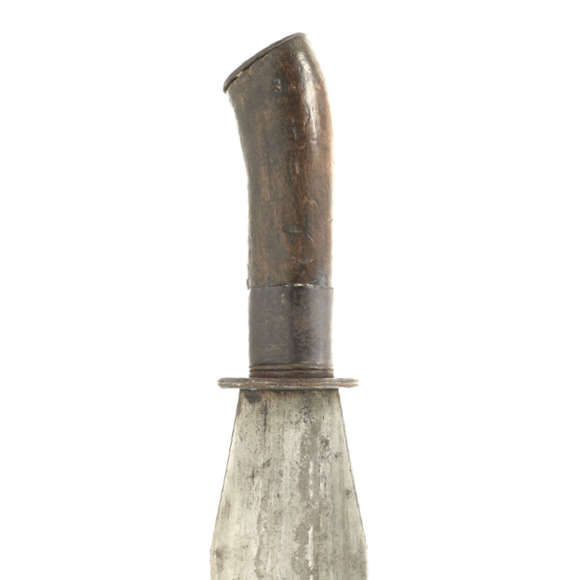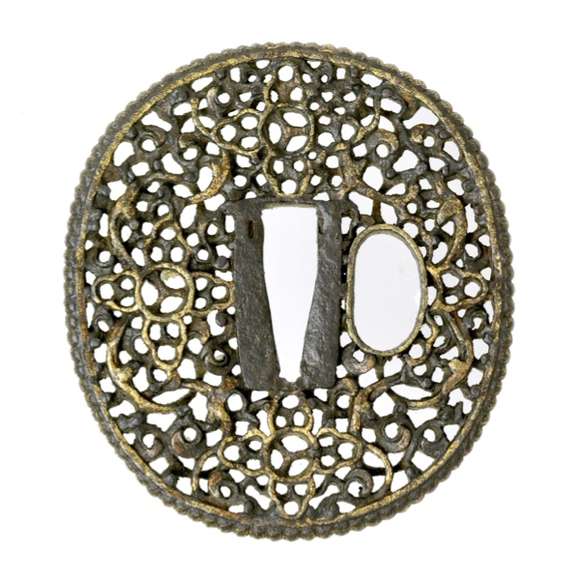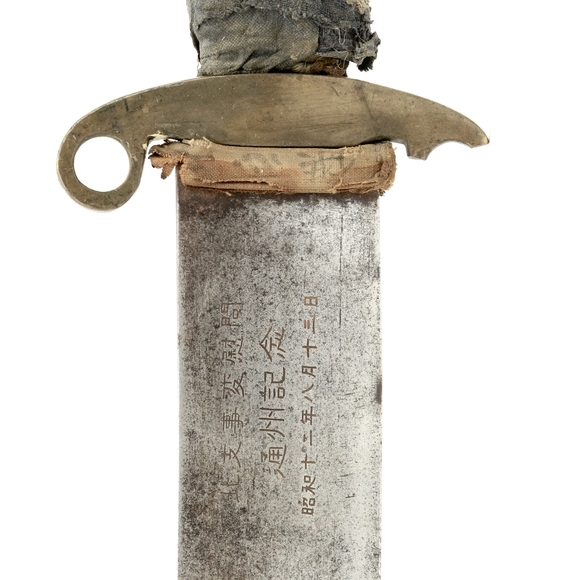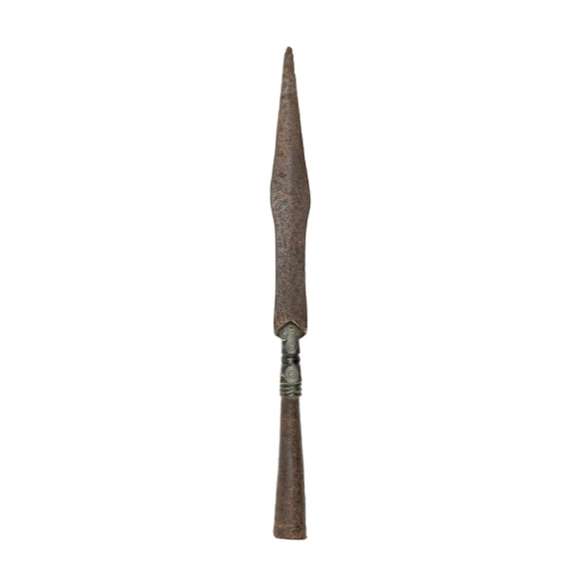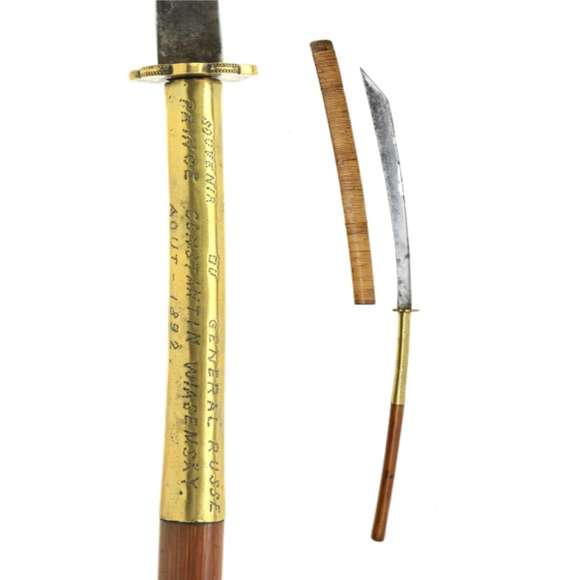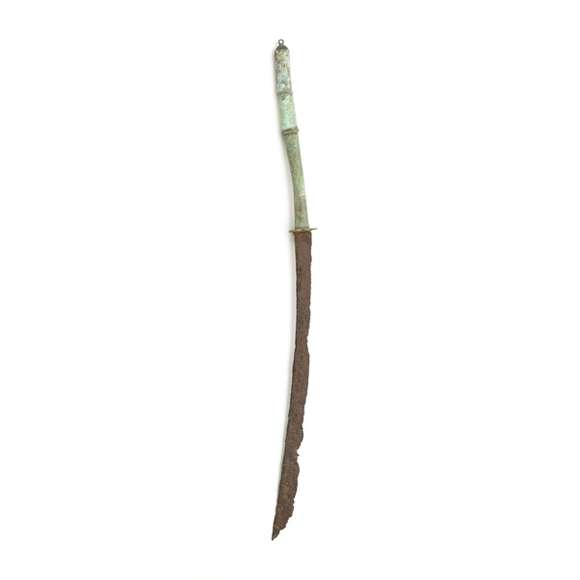1. Global overview
The following list is an overview of Chinese saber terminology as found in two 18th century Chinese dictionaries and a book on arms manufacture of the early 19th century.1

|
# |
English |
Chinese |
Pinyin transliteration |
|
|
|
||
| 1 | Grip | 刀把 | dāobǎ |
| 2 | Pommel | 刀把頂束 | dāobǎ dǐngshù |
| 3 | Ferrule | 刀把束 | dāobǎ shù |
| 4 | Guard | 刀護手 | dāo hūshǒu |
| 5 | Collarpiece | 刀吞口 | dāo tūnkǒu |
| 6 | Groove | 刀槽 | dāo cáo |
| 7 | Blade / edge | 刀刃 | dāo rèn |
| 8 | Back of blade | 刀背 | dāo bèi |
| 9 | Point | 刀鋒 | dāo fēng |
| 10 | Scabbard | 刀鞘 | dāoqiào |
| 11 | Scabbard mouthpiece | 刀鞘底束 | dāoqiào dǐshù |
| 12 | Suspension bands | 刀鞘中束 | dāoqiào zhōngshù |
| 13 | Suspension bar | 刀束樑 / 鞘上雙眼束 | dāo shù liáng / qiàoshàng shuāngyǎn shù |
| 14 | Scabbard endpiece | 刀鞘底束 | dāoqiào dǐshù |
|
|
|||
| Saber tang | 釘刀根鐵 | dīngdāo gēntiě | |
| Saber scabbard fittings | 刀鞘束 | dāoqiào shù | |
| Saber lanyard | 腰刀繫子 | yāodāo xìzi | |
| Saber edge is collapsed | 刀刃崩 | dāo rèn bēng | |
| Saber edge has rolled up | 刀刃卷 | dāo rèn juǎn | |
| Rusty saber surface | 刀上鏥 | dāo shàng xiù | |
| Patterned saber surface | 刀上斑 | dāo shàng bān | |
| To chop with a saber | 刀砍 | dāo kǎn | |
| Strike with back of saber | 刀背砍 | dāo bèi kǎn | |
| To carry a saber | 帶刀 | dài dāo | |
| To pull the saber | 拔刀 | bá dāo | |
| To insert the saber | 挿刀 | chā/zhǎ dāo | |
| To shed the scabbard2 | 脫鞘 | tuō qiào |
Notes
1. Terms are taken from the Tongwen Guanghui Quanshu (同文廣彙全書) or "Enlarged and complete dictionary", Qing imperial dictionary in Chinese and Manchu of 1702, each entry double checked and approved by the Kangxi emperor, and: Wuti Qingwen Jian (五體清文鑑)or "Five languages compendium", a Qing imperial dictionary in Manchu, Mongolian, Uighur, Tibetan and Chinese of 1766. Published under the Qianlong emperor.
2. Chinese sabers were suspended from the belt by means of a belt-hook so the scabbard could be easily cast aside when the saber was drawn. This practice of "shedding the scabbard" is probably why all saber forms in Chinese martial arts start with the saber already out of the scabbard.
2. Overview per source

From:
Tongwen Guanghui Quanshu (同文廣彙全書) or "Enlarged and complete dictionary" of 1702. A Qing imperial dictionary in Chinese and Manchu, each entry double-checked and approved by the Kangxi emperor.

From:
Wuti Qingwen Jian (五體清文鑑) or "Five languages compendium", a Qing imperial dictionary in Manchu, Mongolian, Uighur, Tibetan, and Chinese of 1766. Published under the Qianlong emperor.

From:
Qinding Gongbu Junqi Zeli (欽定工部軍器則例) or "Imperial regulations and precedents on weapons and military equipment by the Ministry of Public Works", 1813. Chapter 36.
Conclusion
The above overviews show that there was considerable variation in terminology used from source to source, while some terms like tūnkǒu tend to stay the same. There were probably many more terms for each of the various parts, with regional variations between provinces and even between towns, or workshops within the same town.


